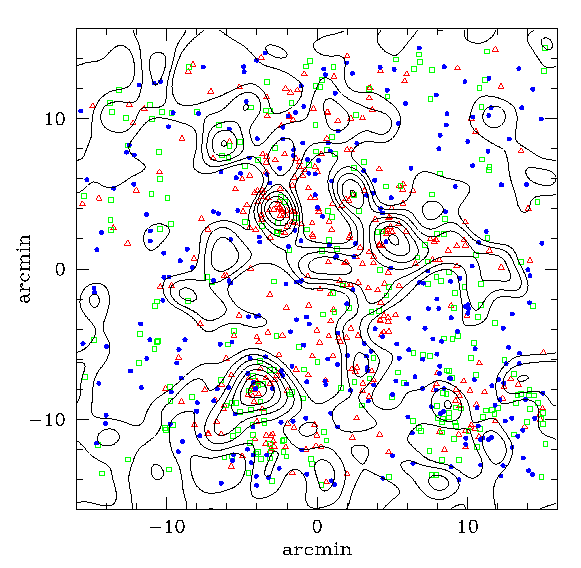Classifying
Objects by
Medium-Band
Observations
- a spectrophotometric
17-filter survey -
project: Linking galaxy properties and environment

Figure: Distribution of redshift-selected supercluster galaxies
relative to the lensing mass map of Gray et al. 2002 (contours).
Red symbols represent galaxies classified (according to SED) as `early-types',
green symbols represent `late-types', and blue circles represent `starbursts'.
Clusters and superclusters of galaxies offer the ideal testing ground
with which to investigate the effects of environment on galaxy evolution.
With the combination of wide-field weak gravitational lensing studies and
multi-band photometric observations, we are able to link distributions
of dark and luminous matter and ask: how do galaxy properties correlate
with environment? Using deep R-band imaging of the Abell 901/902
supercluster field, we apply weak lensing techniques to reveal the dark
matter distribution, including three galaxy clusters at z~0.17 and inter-cluster
filamentary structure. Armed also with the photometric redshifts
and spectral classifications from the 17-band dataset, we produce a 3D
view of the luminous foreground structure and are able to trace galaxy
types and properties as a function of their location in the underlying
density field. We find strong evidence for segregation by type, with
the highest density regions populated almost exclusively by galaxies classified
as early-types. We also observe a critical surface mass density above which
star-formation activity is truncated.
Contact person: Meghan Gray, ROE
Back to COMBO-17 science page
Last update Sep 18, 2002, CW
